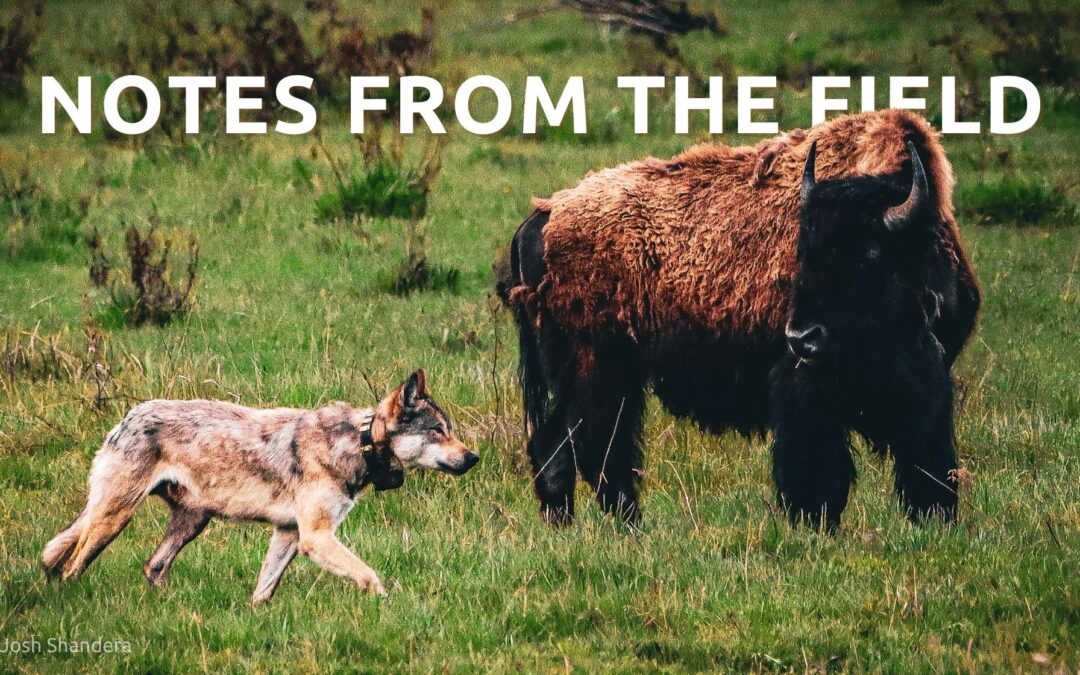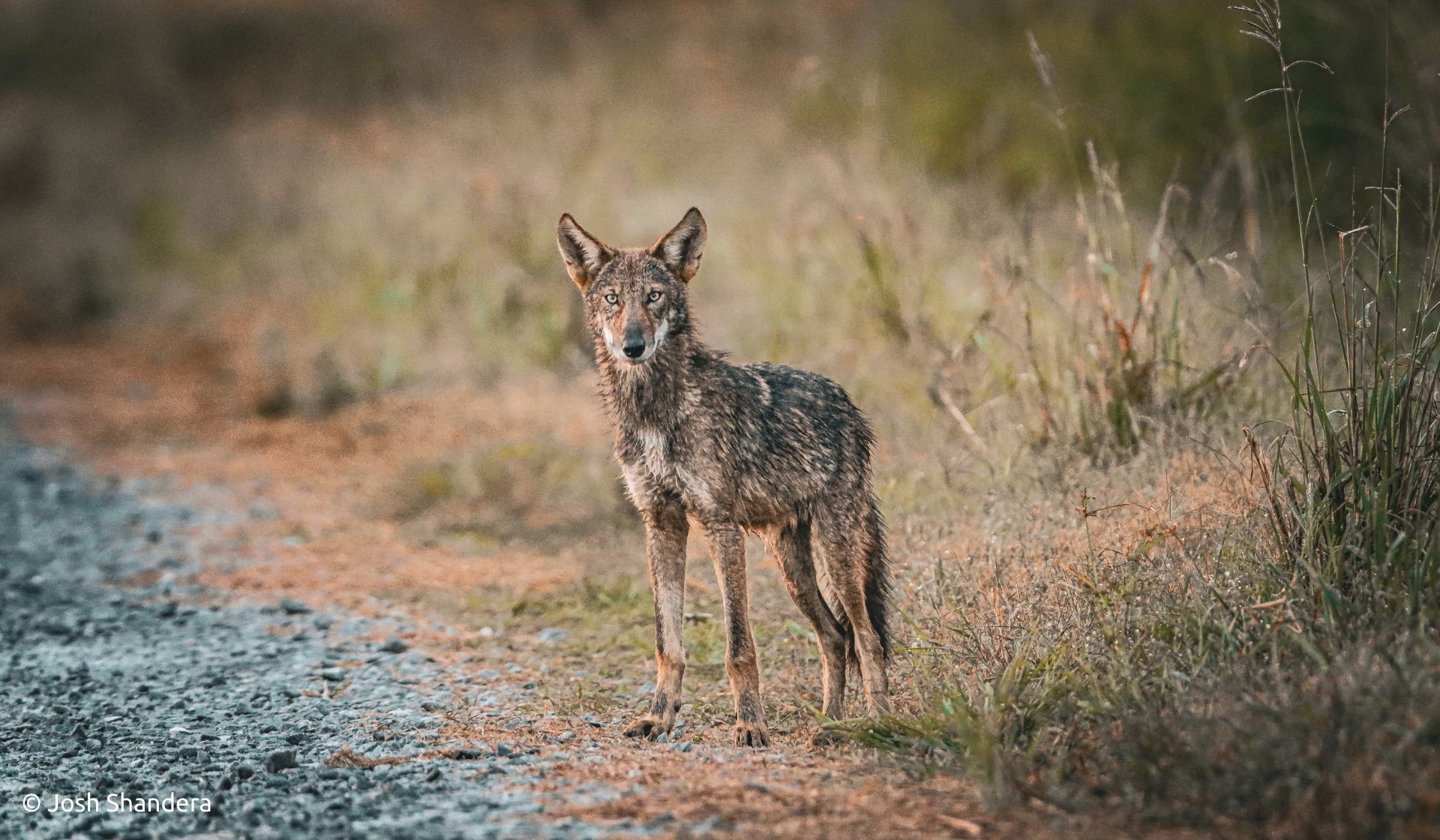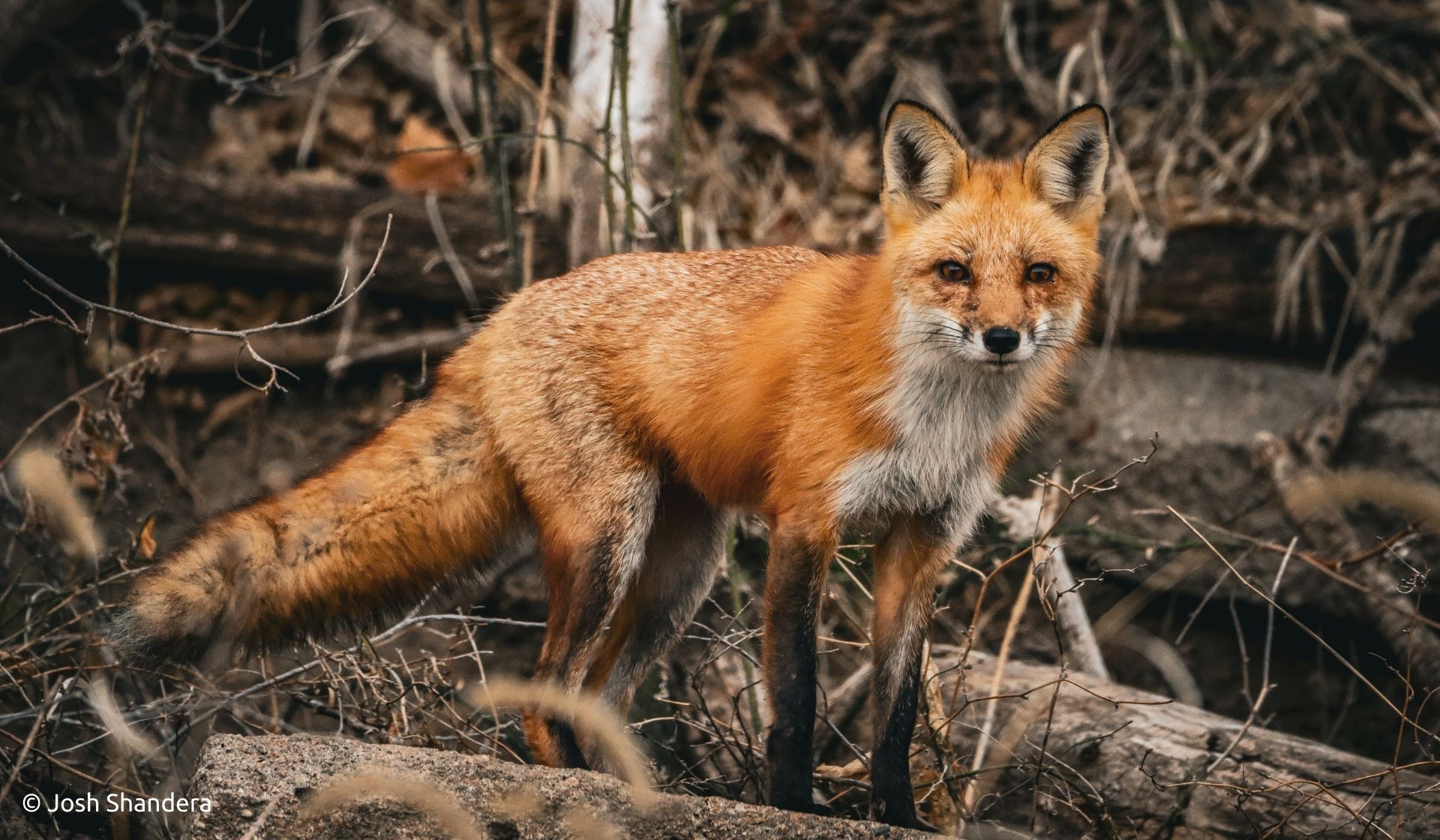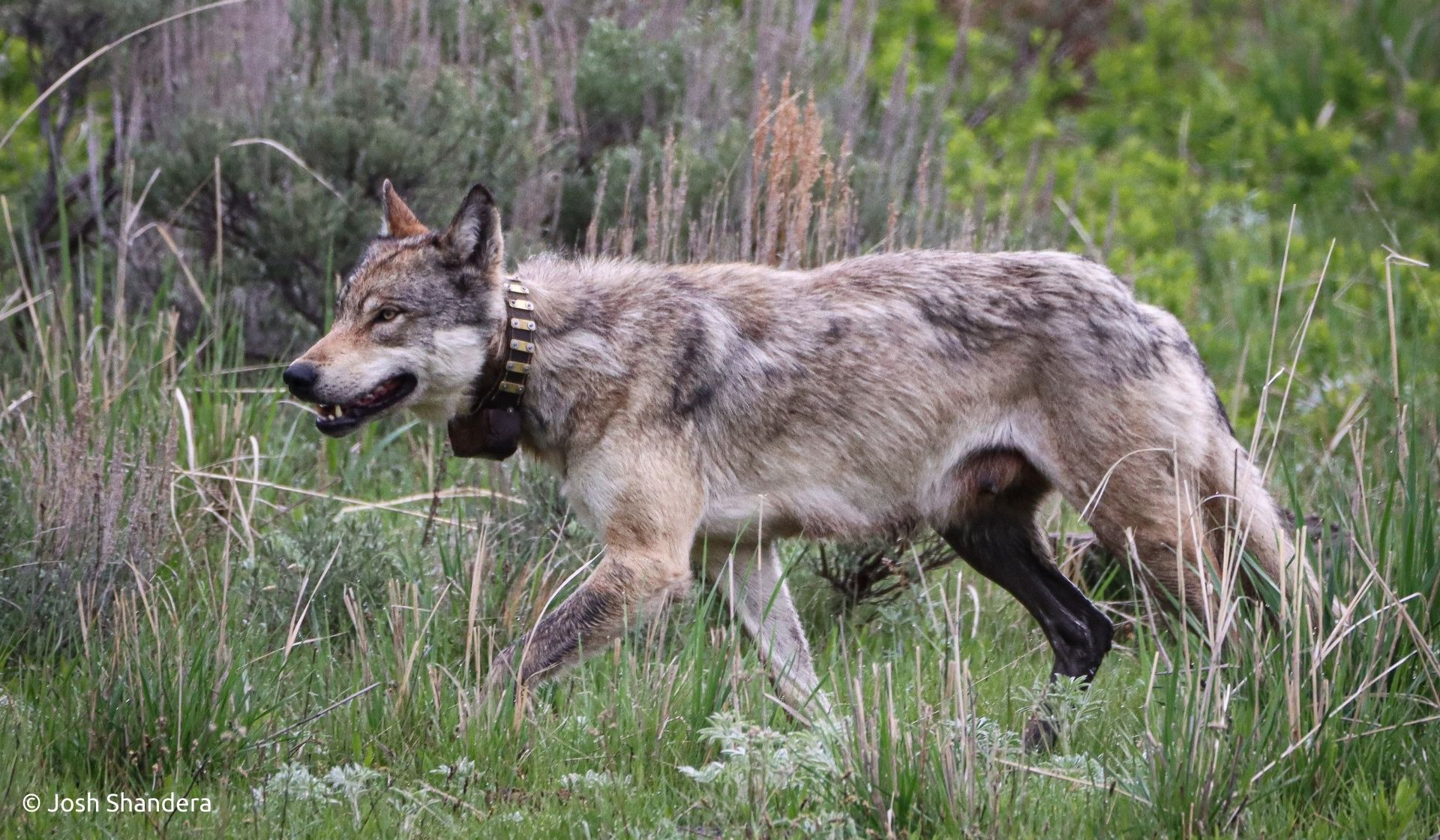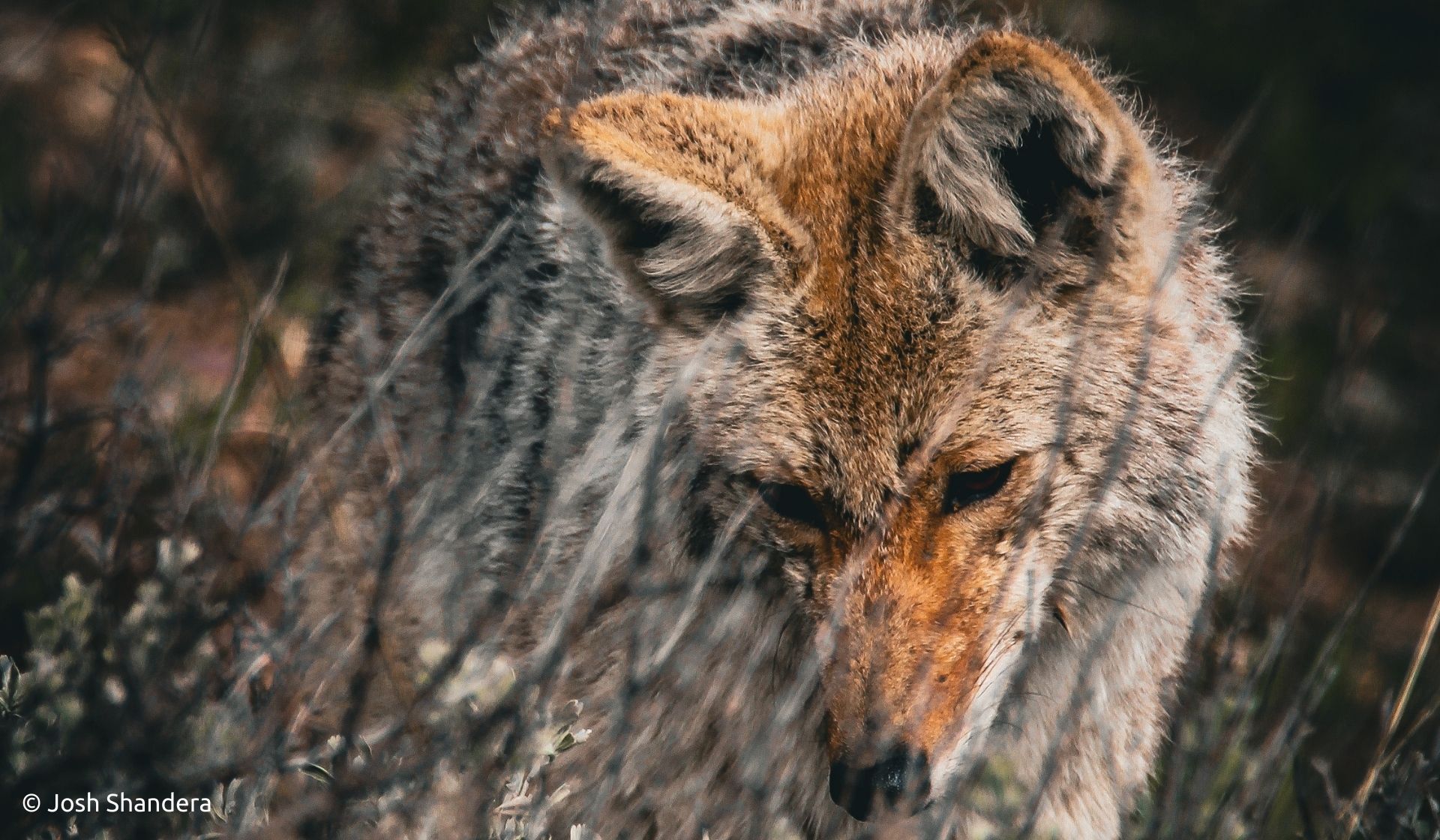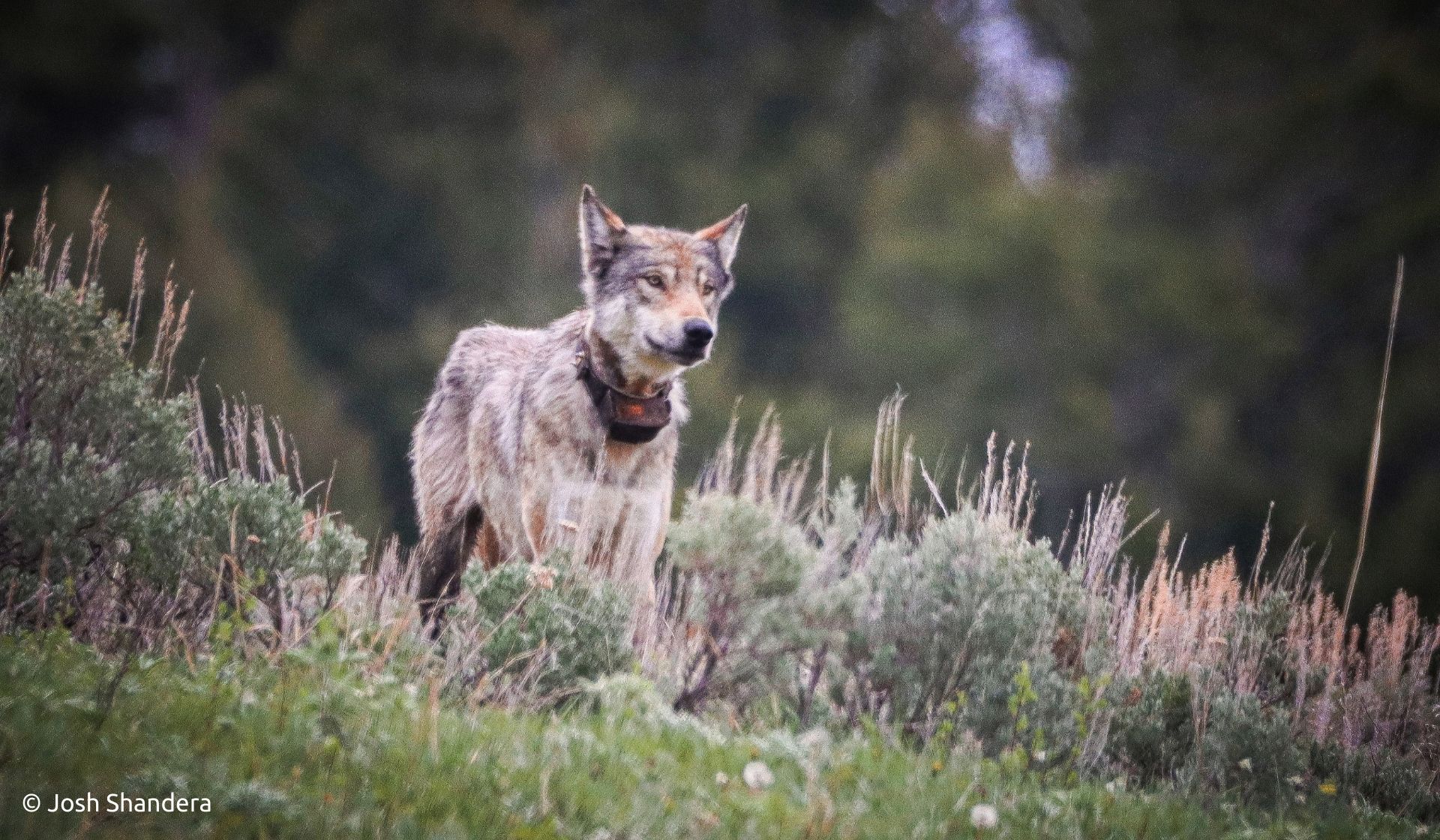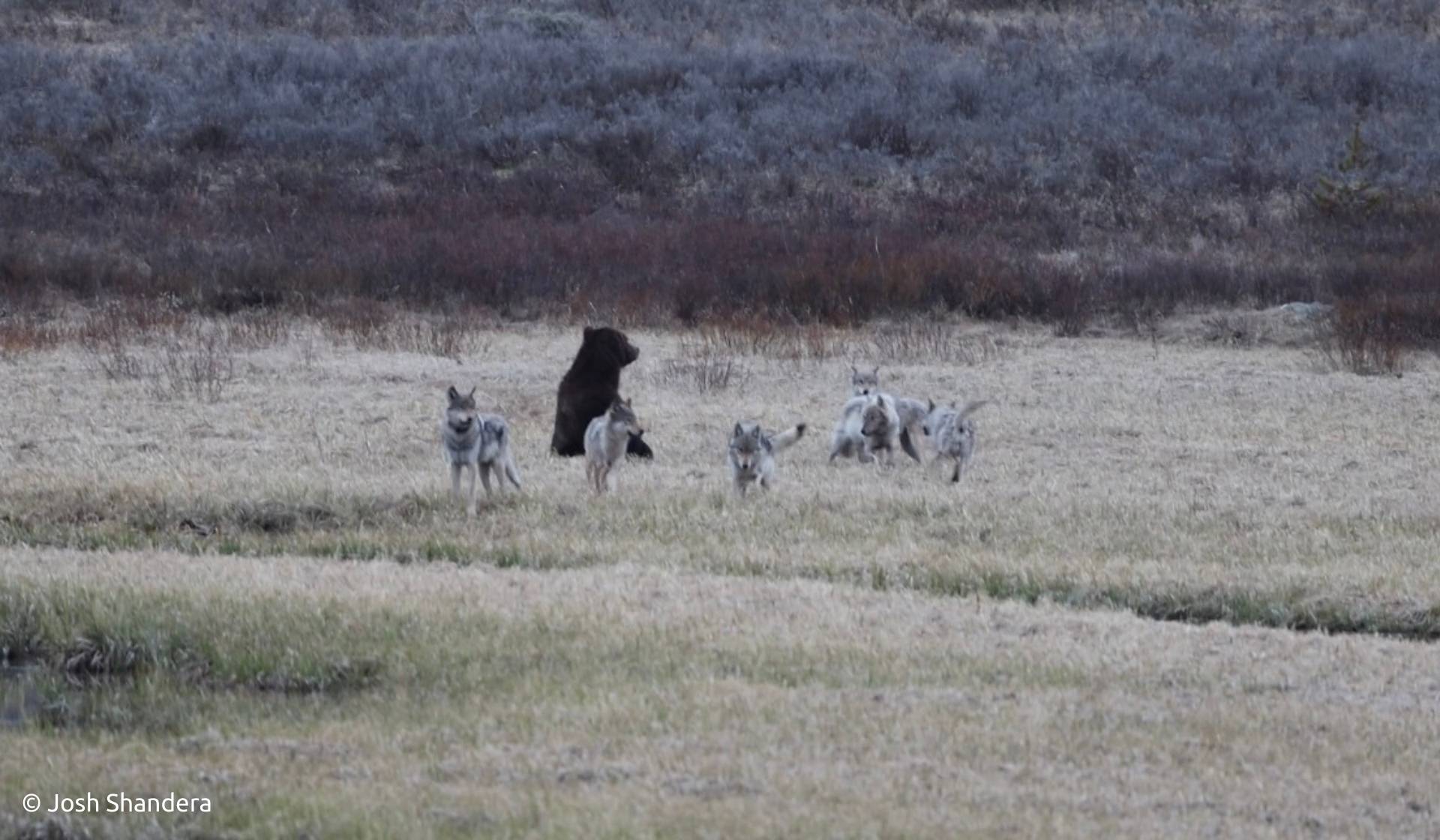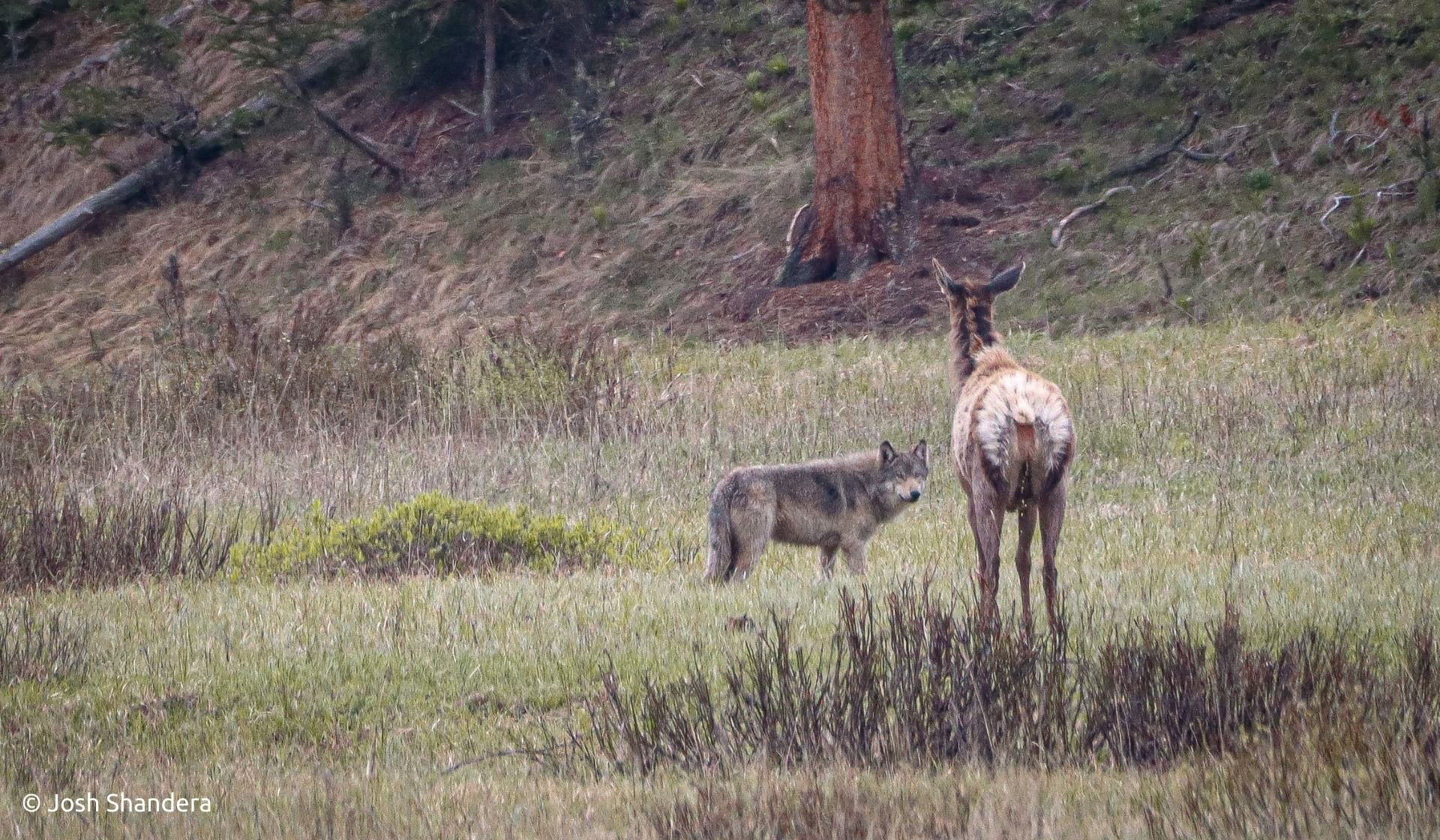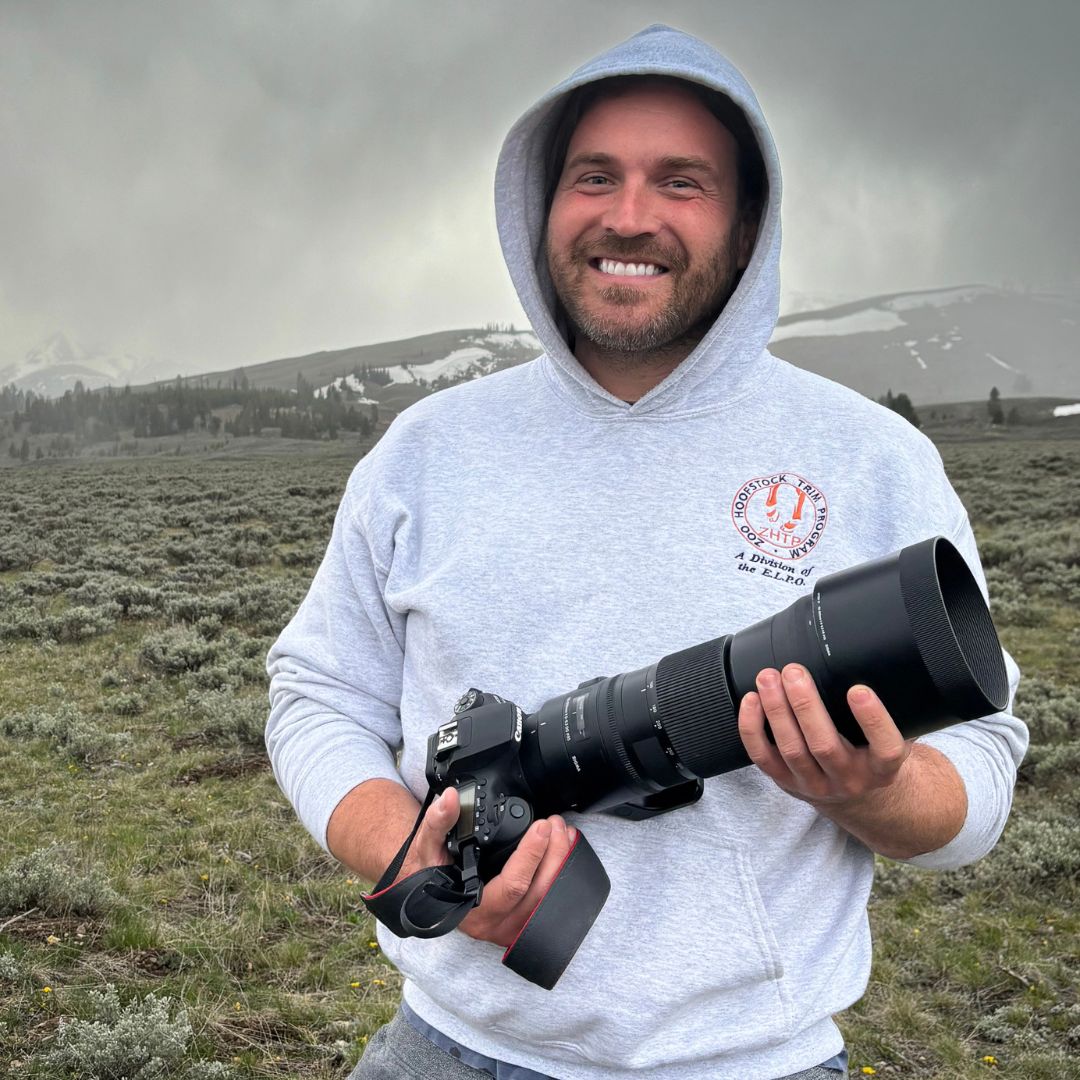Interview with Wildlife Advocate & Photographer Josh Shandera
Interview with Josh Shandera, #CaptureCoexistence Contributor
There is nothing quite like observing wild coyotes, wolves, and bears in their natural habitats. Few people are lucky enough to experience these sights in-person. Thankfully, wildlife photographers and videographers will wait patiently for hours, days, or sometimes even weeks to capture these sentient beings on camera.
Project Coyote is continually inspired by the dedication of our #CaptureCoexistence Contributors to showcasing the beauty of wild lives and sharing impactful stories and observations from the field. We spoke to Josh Shandera recently, a Contributor since the inception of our #CaptureCoexistence campaign, about his experiences documenting wildlife.
Josh’s passion for wild carnivores has led him to Yellowstone National Park countless times, as well as other areas of wild nature across the country, to observe and document gray wolves, red wolves, bears, coyotes, foxes, and numerous other species. Like our team members at Project Coyote, Josh is passionate about ending the unjust and unscientific persecution of wild carnivores by inspiring new audiences to care about these animals as individuals.
We hope you’ll enjoy hearing about Josh’s journey as a wildlife photographer and his captivating stories from the field. Please consider sharing this interview to help us foster appreciation and respect for our wild neighbors! Together, we can collectively reshape public perceptions and evoke appreciation for our Ecosystem Allies.
How do you feel that nature photography plays a role in wildlife conservation?
Wildlife photography plays a crucial role in conservation by connecting people to our natural world in visually appealing and captivating ways. I feel strongly that photographers have a unique opportunity to evoke emotions, raise awareness about the importance of preserving wild spaces, and inspire action through their images. Our photographs can highlight not only the beauty to be found, but the delicate balance of the ecosystems and the threats facing the wildlife dependent upon them. By capturing images of endangered species in their natural habitats, wildlife photographers can shed light on the conservation status of these animals and the urgent need to protect them and their habitats.
These photographs can serve as powerful tools for advocacy, influence public opinion, policy decisions, and funding for various conservation efforts. Additionally, wildlife photography can foster a sense of empathy and connection with wildlife, encouraging people to take the actions necessary to conserve species and their habitats. Whether it’s through photo displays, publications, or our own social media, wildlife photographers play a vital role in engaging and inspiring individuals to become stewards of the environment. They say a picture is worth a thousand words. While this may be true, I think there are more important things to remember and those are the emotions that a photo can evoke. Admiration, respect, and compassion can all serve to elicit the emotions that provoke the thought and desire for people to appreciate, protect, and preserve our natural world.
What inspired you to become a Capture Coexistence Contributor?
Growing up, I’ve always been drawn to the outdoors and the wildlife that can be found there. Whether it was camping in the local state parks as a child, or exploring our national parks in my adult life, there has always been an undeniable pull towards these places. However, it wasn’t until I found the work of certain wildlife photographers that I realized the real power behind this type of visual storytelling. The images captured by these talented photographers inspired me to pick up a camera and begin my own photography journey. Their photographs represent not only a frozen moment in time, but stand as a testament to their patience, skill, and unwavering dedication to the craft.
As I found myself more immersed in the world of wildlife photography, I became increasingly fascinated by the stories behind some of these shots- the hours spent waiting for the perfect light, the animal to appear from the trees, or patiently waiting for the subject to be comfortable enough to come within a good photography distance. I aspired to immerse myself into this world of wildlife photography, learn from their experiences, and share in their passion for preserving our natural world.
For these reasons, I was excited and honored to be asked to pair with Project Coyote and become a Capture Coexistence Contributor. This opportunity has opened the door to a community of skilled professionals who have allowed me to feel a sense of camaraderie that comes from shared experiences and a desire to see change in the world around us. On a planet where we are becoming more disconnected from nature, wildlife photography can serve as a powerful reminder of our own connections to the world around us and the fact that our own existence really does depend on it.
I hope that my work can inspire others to value wildlife and wild places and join in the efforts of many to protect and preserve it for future generations. As I continue this journey of exploring and photographing wild places, I am filled with gratitude for the circumstances that led me down this path. Even though that path, which includes things like sleeping in a car, not showering for days, or living off of cold prepackaged food can be challenging at times—the rewards, both photographic and personal, really do feel endless. And for those reasons, I’ll be a lifelong wildlife photographer.
What is the most memorable wild carnivore encounter you’ve had as a photographer?
Since picking up a camera, I’ve been incredibly fortunate to have photographed some of North America’s most recognizable wild carnivores. Photographs of grizzly and black bears, red wolves, and coyotes have filled my camera’s memory cards and each of those moments has been special for their own reasons. However, anyone who knows me understands that there is one species that I’ve been more drawn to than any of the others—the gray wolf.
Photographing wild gray wolves can present a few specific challenges that make each opportunity to do so somewhat uncommon and extraordinary. Given their elusive nature, photographic encounters with gray wolves are often rare and require patience, skill, and sometimes just plain luck. Wolves have long been surrounded by symbolism that represents strength, freedom, and true sense of the wild. By photographing these remarkable animals, we can highlight the challenges that they face, advocate for their conservation, and promote coexistence between wolves and humans.
My most memorable photographic encounter with wild carnivores actually happened very recently in Yellowstone National Park and included gray wolves. During a visit to my favorite national park, I was told about a bison carcass that had recently been secured by the 8 mile wolf pack. A fellow wildlife photographer mentioned that wolves had been frequenting the carcass throughout the day and that it would be worth checking out if I wanted an opportunity to see and photograph the wolves.
A friend and I checked on the carcass site periodically throughout the day, and although the carcass was often visited by ravens or an occasional bald eagle, no luck with the wolves—yet. Since our time in Yellowstone was limited, we opted to continue driving around the park to see what else we could find and then plan to return later. Later that evening, on our way back to camp we decided to stop at the carcass site and watch throughout the remaining hour of light that we had left. About twenty minutes of waiting had passed, with no activity other than a light snow that started to fall. With the light continuing to fade, I started to feel like this opportunity to see wolves might not include that luck that is often so necessary with wolf encounters. A few minutes later, we spotted something making its way down the hill in the direction of the carcass. It was a large male grizzly bear—not the wolves I was hoping for, but a special and exciting moment nonetheless. As he lumbered towards the carcass, he picked up speed and eventually reached and began to feed on what was left of the carcass.
However, something about his behavior made it appear that he wasn’t incredibly comfortable in the area and that he probably knew something we didn’t. After just a few minutes and a few mouthfuls of the bison, the bear quickly stood up and retreated back up the hillside that he only recently approached from. While the bear remained on the hillside, possibly contemplating approaching the carcass again, I looked at the back of my camera to see the photos that I had taken of the bear at the carcass. After what couldn’t have been more than a minute, I looked back up to check on the bear and almost couldn’t believe what I was seeing—nine wolves from the 8 mile wolf pack chasing this bear further up the hillside.
While the wolves circled the bear, biting in his direction, he ended up moving back toward the carcass, not willing to just give it up without a fight. Incredibly, one bear was able to keep almost all nine wolves at bay- probably due to the fact that he outweighed every wolf by a significant amount. His astounding efforts aside, he was never able to fully reach the carcass, instead recognizing defeat and retreating again up the hill and remaining there as the wolves returned to the carcass. In this moment, the social dynamic of a wolf pack was on full display as only certain individuals were able to feed from the carcass at a time, while others maintained their distance waiting for an opportunity to feed. As the last of the light faded to darkness, we watched the wolves fill their bellies with the prize, before heading back towards our campsite for the night. Still on a high from the dramatic scene I had just witnessed, I was unable to sleep, instead going through my camera opting to relive those moments, making sure to fully understand how special and rare that opportunity really was.
I’ll never stop in my pursuit of viewing and highlighting the issues that surround gray wolves and this experience has only strengthened the desire to be a part of the changes we need with our views towards wolves and other wild carnivores. There should be no questions about the fact that they are absolutely as essential to the landscape as the air we all need to breathe.
Josh Shandera is a passionate wildlife photographer & advocate. He was born and raised in Omaha Nebraska, and has worked as a zookeeper at the AZA accredited Omaha Zoo for the last ten years, caring for species including giraffes, okapi, various antelope species, rhinos, and cheetahs. In his spare time, Josh photographs wildlife in National Parks and beyond. He enjoys having the opportunity to educate people about the issues that much of our wildlife are up against, whether it’s at work or through his photography.

